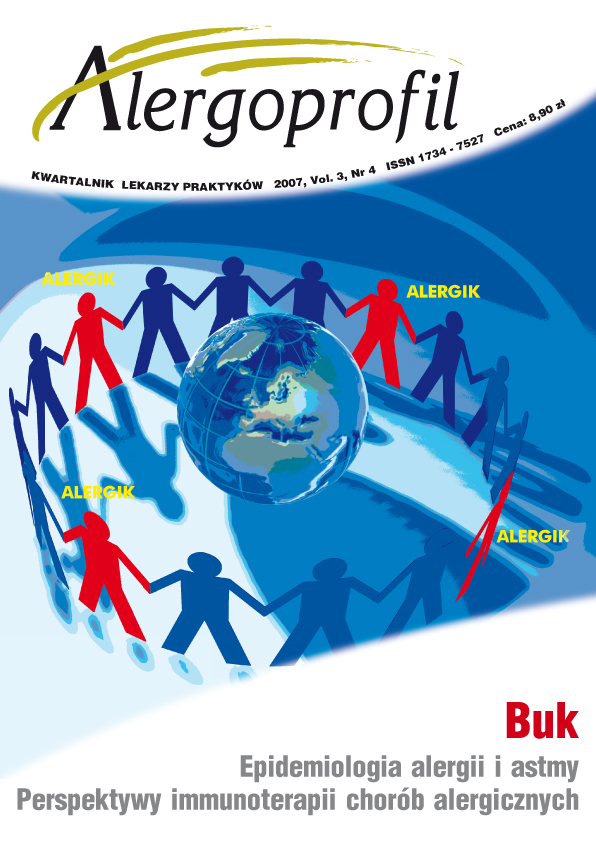Grass pollen count in 2007 – preliminary report
Main Article Content
Abstract
Seasonal character of symptoms is the distinctive feature of allergic diseases evoked by pollen allergens. Symptoms occur only when pollen count reaches a certain level. Clinical symptoms of allergic disease were connected to the concentration and the kind of aeroallergen the subjects were exposed to. First symptoms in patients allergic to grass were visible during exposure to the concentration of 20 pollen grains in 1 m3 of air (25% subjects sensitized to grass pollen). Symptoms were noted in all the subjects sensitized to grass pollen at a concentration of approximately 50 grains/m3 of air. During exposure to the a concentration exceeding 65 grains/m3 the symptoms were strenghtened. A several hours’ exposure to grass pollen concentration exceeding 120 grain/m3 cause dyspnoea in some patients. The initial assessment of clinical symptoms in subjects suffering from allergy to grass pollen allergens indicates that in 2007 seasonal symptoms are more severe that in 2006. The number of days with pollen count exceeding 65 and 120 in 1 m3 of air are higher in 2007 that in 2006 and 2005.
Downloads
Article Details
Copyright: © Medical Education sp. z o.o. This is an Open Access article distributed under the terms of the Attribution-NonCommercial 4.0 International (CC BY-NC 4.0). License (https://creativecommons.org/licenses/by-nc/4.0/), allowing third parties to copy and redistribute the material in any medium or format and to remix, transform, and build upon the material, provided the original work is properly cited and states its license.
Address reprint requests to: Medical Education, Marcin Kuźma (marcin.kuzma@mededu.pl)
References
2. Rapiejko P., Stankiewicz W., Szczygielski K., Jurkiewicz D.: Progowe stężenie pyłku roślin niezbędne do wywołania objawów alergicznych. Otolaryngol. Pol. 2007; 61(4) (w druku).
3. Lipiec A., Rapiejko P., Samoliński B., Krzych E.: Correlation between cobjunctival provocation test results and conjunctival symptoms in pollinosis – prelimary report. Ann Agric Environ Med. 2005; 12(1):17-20.
4. Roberts G., Hurley C., Turcanu V., Lack G.: Grass pollen immunotherapy as an effective therapy for childhood seasonal allergic asthma. J Allergy Clin Immunol., 2006; 117(2):263-268.
5. Ratajczak J., Rapiejko P., Wojdas A., Lipiec A., Jurkiewicz D.: Voice organ dysfunction in patients with allergic rhinitis sensitized to birch. Polish J. of Environ. Stud. 2006; 16 (1A): 51-54.
6. Rapiejko P., Leśkiewicz-Laudy A., Lipiec A., Jurkiewicz D.: Grass pollen count in two different measurement sites in Warsaw. Polish J. of Environ. Stud. 2006; 16 (1A): 47-50.
7. Kalinowska E., Malkiewicz M., Weryszko-Chmielewska E., Piotrowska K., Myszkowska D. et al.: Analiza stężenia pyłku traw w wybranych miastach Polski w 2005 r. – doniesienie wstępne. Alergoprofil 2006; 1(1): 59-63.
8. Lipiec A., Malkiewicz M., Maj J., Puc M., Myszkowska D. et al.: Stężenie pyłku traw w 2006 r. Alergoprofil 2006; 3: 52-61.

